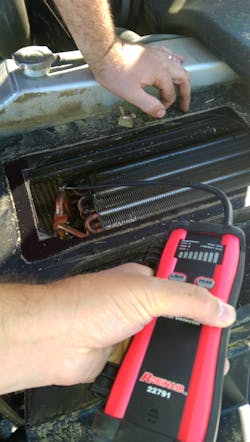Refrigerant leaks are the No. 1 cause of warranty issues and it’s important to know that all systems leak, says Robert Brocx, test engineering manager for Red Dot Corporation (www.rdac.com), a company that designs and builds high-performance HVAC systems and components for heavy duty commercial and military vehicles.
There are five main reasons why leaks can be so difficult to find, he says. They are:
Size – All systems have leaks, “not necessarily leaks you’re trying to find.” Both large and small leaks need to be addressed.
Methods – Certain methods used for detecting leaks may not be sensitive enough to find small leaks. Brocx says his favorite way to find leaks is to go around looking for them, keeping an eye out for visible oil or dust, as that may indicate a large leak. Smaller leaks may require additional tests.
Elusive Leaks – Some leaks may be influenced by environmental factors such as pressure, temperature and vibration.
Location – Leaks can be in areas that are difficult to access and view such as hoses that are routed through
Time – To ensure a system does not have small leaks takes extra time and effort.

